Tagged: David Ades
deTour: Ades Dry Goods Store
The Blue Grass Trust’s deTours is a group of young professionals (and the young at heart). The program provides behind-the-scenes tours of historic buildings, places and sites in central Kentucky. BGT deTours are free and open to the public. They occur on the first Wednesday of every month.
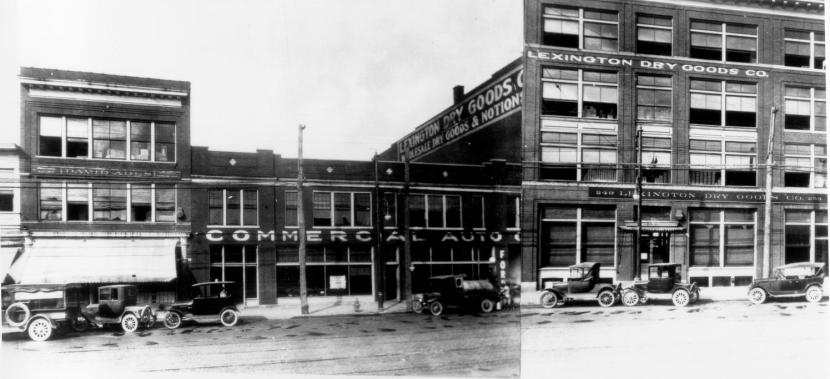
Lexington Dry Goods Company Store ca. 1921. The east third (the last little bit on the right that is cut off) of the building was added in 1920. Image via Kentucky Digital Library
This month, deTours visited the Ades Dry Goods Store (also known as the Lexington Dry Goods Company Building), located at 249 East Main Street in Lexington, Kentucky. The circa 1907 building became one of Lexington’s first mixed occupancy buildings when it was renovated in 1988, the same year it was listed in the National Register of Historic Places. The storefront/warehouse was adapted to house a restaurant, commercial space and loft-style apartments by Omni Architects. Today, it is the home of one of Lexington’s more popular restaurants, Portofino, and several successful companies (the fourth floor apartments have been removed and are now more office space). But even more interesting than the evolution of the use of the space, is the building’s second tenant, David Ades.
In 1922, Ades owned and operated the Ades Dry Goods Store a half a block from the Lexington Dry Goods Company. At the time, The History of Kentucky, Volume 3 noted, “A business that has done much to fortify Lexington as a wholesale market for the entire Blue Grass region is the wholesale dry goods and notions house of David Ades. It is a business with an interesting history and the career of its proprietor is an illumination story of American opportunity grasped and improved by a foreigner.”
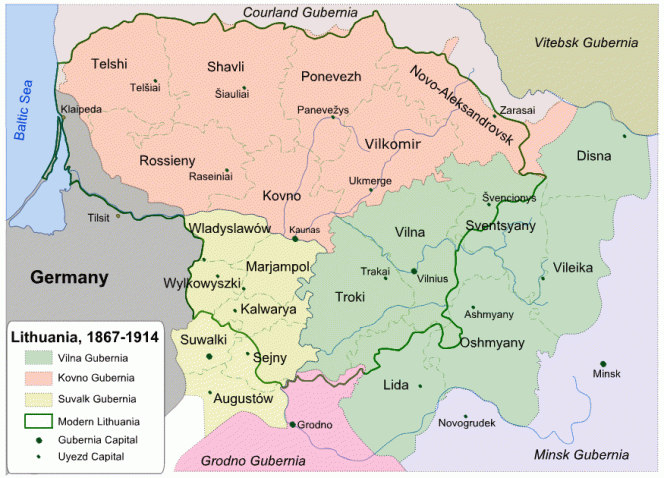
Although Ades was born a Russian Jew, his homeland became Lithuania after WWI. Kovno is now located in present-day central Lithuania. Image via Jewish Gen.
Ades’ story is just as remarkable today as it was in 1922, when the authors of The History of Kentucky wrote, “David Ades was born at Kovno, Province of Gubernia, Russia [present day Lithuania] and came to America at the age of thirteen. He was absolutely penniless when he stepped off the ship at Baltimore. His destination was Lexington where his brother Simon Ades had been in the wholesale dry goods and notions business for some twelve years… David Ades went to work for his brother at $2 a week and board. He was possessed not only of a great ambition to become an American business man but an American citizen in every sense. For two years after coming to Lexington after working all day in his brother’s establishment he attended night school… David Ades made himself in time so proficient as to be one of his brother’s force of salesmen, and eventually took over part of his brother’s line.”
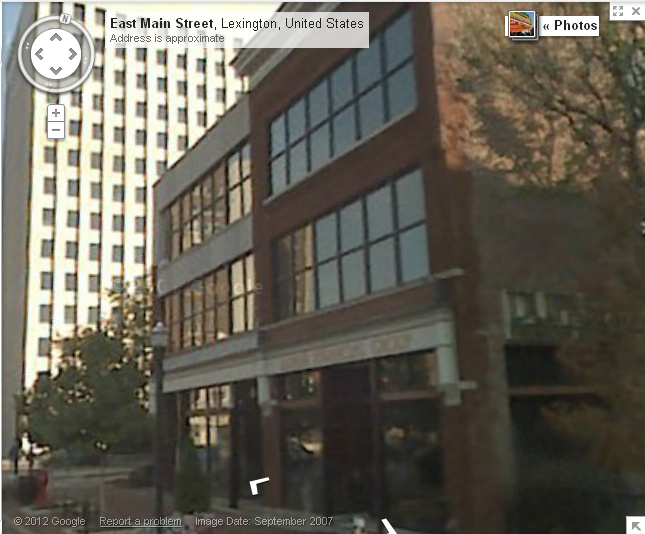
Former Ades Dry Goods Store. Constructed ca. 1910. Image via Google Maps
“His present business dates its establishment from 1908 when he possessed less that $3,000 in capital… The volume of business today is fully a million, with a quarter of a million dollars invested… The present headquarters of his business is a three-story and basement structure with over 20,000 square feet of floor space, and with frontage of 117 feet on Main Street and 167 feet in depth.” The 1922 “headquarters” mentioned by The History of Kentucky, Volume 3, is pictured above.
By 1925, Ades’ rapidly expanding capital and workforce put him in the position take over The Lexington Dry Goods Company. Presumably, it was at this point that the larger Lexington Dry Goods Company Building became the Ades Dry Goods store and warehouse.
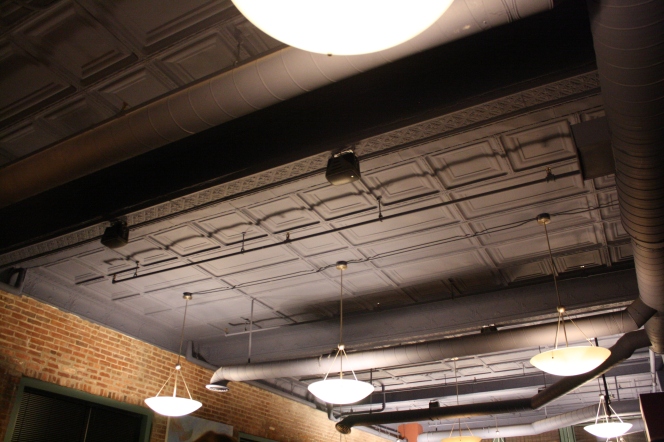
Original ceiling tiles in one of Portofino’s dining rooms.
Ades was not content with just one successful business. During the 1940s, the associated United Shoe & Garment Company and the Seda Company, Inc., were also listed as being located in the Ades Dry Goods building. Ades was president of both companies until the 1950s.

Multi-paned metal windows original to 1920 addition.
He was also active in civic and social affairs. Ades was a director of the First City National Bank of Lexington, a member of the Board of Commerce, the Elks, the Scottish Rite of Masonry, and he was a Noble Grande of Lexington Lodge of Odd Fellows. In addition to the extended biography included in The History of Kentucky, he was listed among prominent Jewish citizens of Lexington in the 1917 special issue of the Lexington Herald.
Not too bad for a penniless teenage immigrant! An “illumination story of American opportunity grasped and improved” indeed.
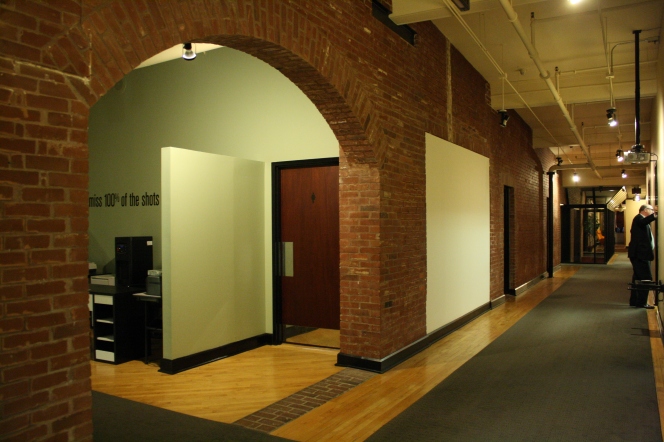
Load bearing brick walls on the fourth floor (now occupied by an ad agency) show the scars of multiple renovations.
In 1977, the Ades family discontinued the dry goods business, sold off the company’s inventory and turned the building into a warehouse. When the building as purchased for redevelopment, the building had been changed very little over time. The redevelopment was able to capitalize on original architectural and ornamental features. The construction of the original building utilized a loft-like cast iron column system that made creating new interior spaces within the historic facade relatively simple. The modern mixed use development takes advantage of original historic fabric such as exposed brick walls, wooden floors, cast iron columns and decorative pressed metal ceiling tiles.
